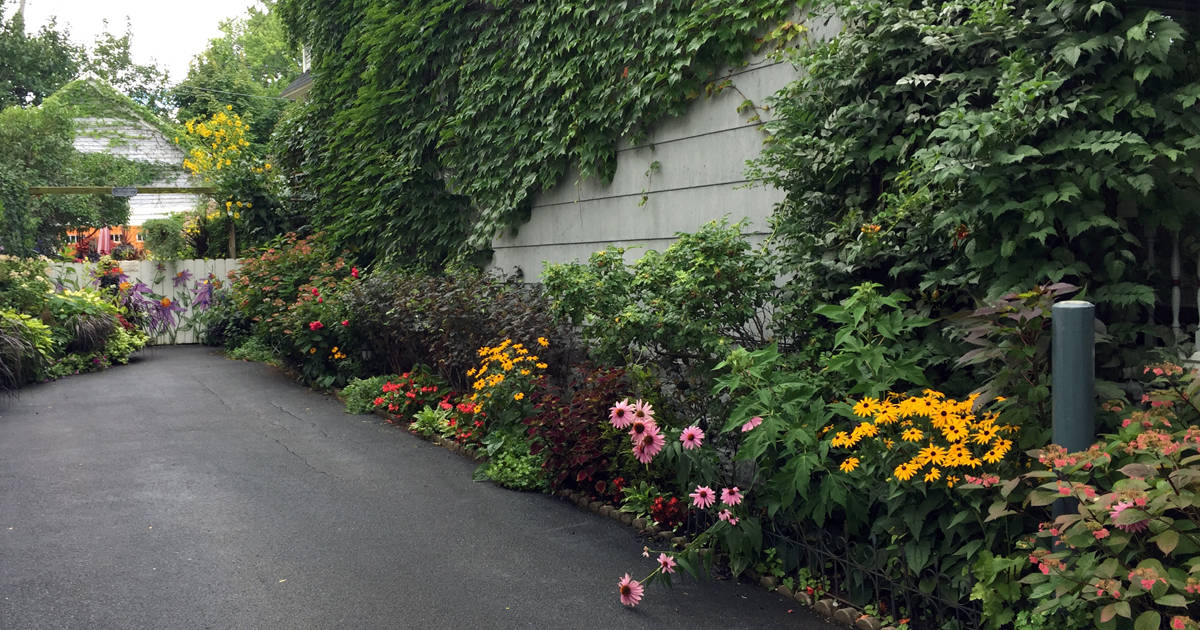Our Hilton Head Landscapes Statements
Our Hilton Head Landscapes Statements
Blog Article
Hilton Head Landscapes Things To Know Before You Get This
Table of ContentsSee This Report about Hilton Head LandscapesSome Ideas on Hilton Head Landscapes You Should KnowThe 7-Second Trick For Hilton Head LandscapesHow Hilton Head Landscapes can Save You Time, Stress, and Money.Hilton Head Landscapes Can Be Fun For EveryoneSome Known Facts About Hilton Head Landscapes.Rumored Buzz on Hilton Head Landscapes
Line creates all kinds and patterns and can be utilized in a selection of methods the landscape. Line in the landscape is created by the side between 2 materials, the outline or shape of a form, or a lengthy linear function. Lines are an effective tool for the developer because they can be used to produce an unlimited variety of forms and forms, and they regulate movement of the eye and the body.

Lines can have one or even more qualities, such as those explained below, but they typically offer different objectives. Figure 1. Lines in the landscape - Landscaping bluffton sc. The homes of lines determine just how people react to the landscape, both psychologically and physically. Straight lines are architectural and forceful; they create an official character, are typically connected with an in proportion design, and lead the eye directly to a prime focus.
A Biased View of Hilton Head Landscapes
Curved lines create a casual, all-natural, loosened up personality that is connected a lot more with nature and asymmetrical balance. Rounded lines move the eye at a slower rate and add enigma to the room by creating covert views.
Vertical lines in the landscape consist of high, narrow plant material, such as trees, or high frameworks, such as an arbor or a bird home on a pole. Horizontal lines move the eye along the ground airplane and can make a room feel larger. Low lines are extra suppressed and produce a feeling of rest or repose.
The Ultimate Guide To Hilton Head Landscapes
Low lines are produced by reduced yard walls, pathways, and brief hedges. Lines are used to draw kinds on a plan. In strategy sight, they define plant beds and hardscape locations. Lines are also developed by the vertical types of built functions and plant product. There are three main line types that produce kind in the landscape: bedlines, hardscape lines, and plant lines.
Bedlines link plant product to your house and hardscape due to the fact that the eye follows the line, moving the stare through the landscape. Hardscape lines are developed by the side of the hardscape, which delineates the built structure. Line can additionally be created by long and slim products, such as a fencing or wall.
The Best Strategy To Use For Hilton Head Landscapes
Kind is located in both hardscape and plants, and it is generally the dominant aesthetic aspect that spatially arranges the landscape and frequently identifies the style of the garden. The form of structures, plant beds, and garden accessories additionally determines the total kind motif of the yard. Formal, geometric types include circles, squares, and polygons.
Plants produce type in the garden with their outlines or silhouettes, but kind can likewise be specified by a space or unfavorable area between plants - hilton head landscapers (https://anotepad.com/notes/s4pn3dek). Circles can be cycles, or they can be divided right into half circles or circle segments and incorporated with lines to produce arcs and tangents
The 3-Minute Rule for Hilton Head Landscapes
Circles can likewise be extended into ovals and ellipses for even more variety and passion. Circles are a strong style form since the eye is always attracted to the center, which can be utilized to emphasize a prime focus or connect various other forms. Figure 2. Round types in hardscape and grass panels.
The square form can likewise be fractional and pre-owned repeatedly to produce a grid pattern. Unlike circles, squares are more powerful on the brink, which can be lined up or overlapped to develop special patterns and more complicated kinds. Polygons are many-sided forms with straight edges. Triangles, as an example, are three-sided polygons.
Meandering lines commonly imitate the all-natural program of rivers or streams and can be defined as smooth lines with deeply bent wavinesses. Twisting lines (Number 3) function well for paths, plant bedlines, and completely dry stream beds. Twisting lines can include interest and mystery official website to a garden by leading viewers around corners to uncover brand-new sights and rooms.
The smart Trick of Hilton Head Landscapes That Nobody is Discussing
.jpeg)
Common plant kinds are well established and standard, as type is the most consistent and identifiable quality of plants. Kind can likewise be developed through the massing of plants, where the general mass creates a various form than a private plant.
A highly different form needs to be used with careone or more work well as a focal factor, however way too many create turmoil. Natural plant types, as opposed to over-trimmed kinds, must develop the bulk of the make-up. The relevance of total kind is basically depending on the seeing perspectivethe form of a tree can show up fairly different to an individual standing under the cover versus seeing the tree from a range in an open area.
The Ultimate Guide To Hilton Head Landscapes
Plant forms likewise produce and define deep space or open areas in between the plants, developing either convex or scooped kinds in deep spaces. High-arching tree branches usually produce a concave open area under the branches, and a rounded cover with reduced branches fills up the area to produce a convex type in the open area under the tree.

Report this page